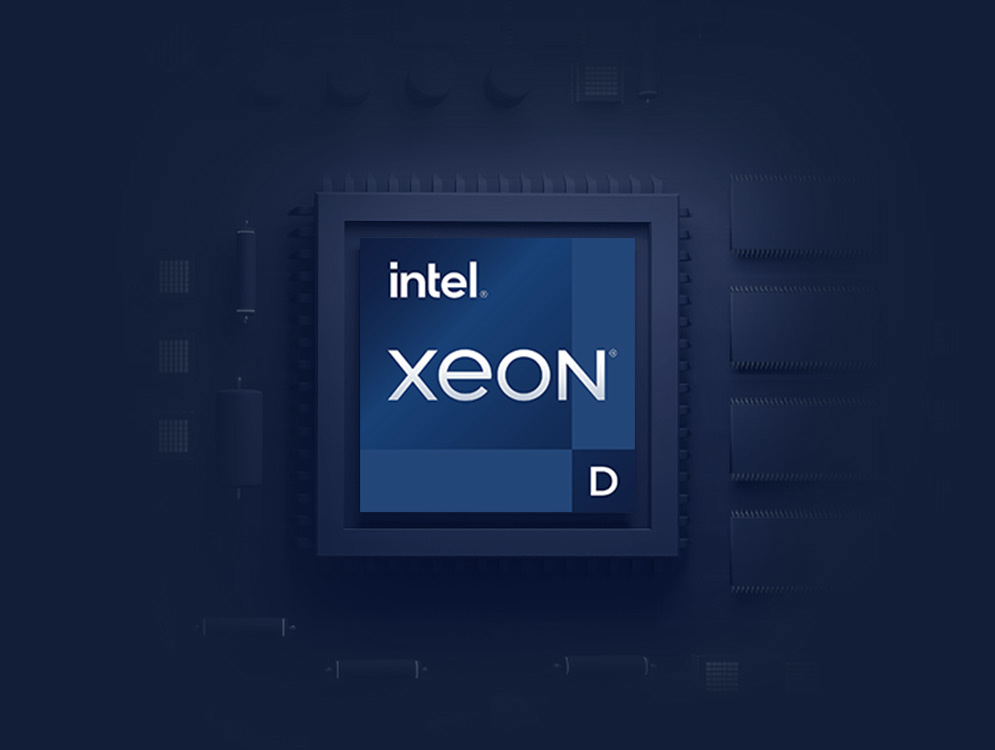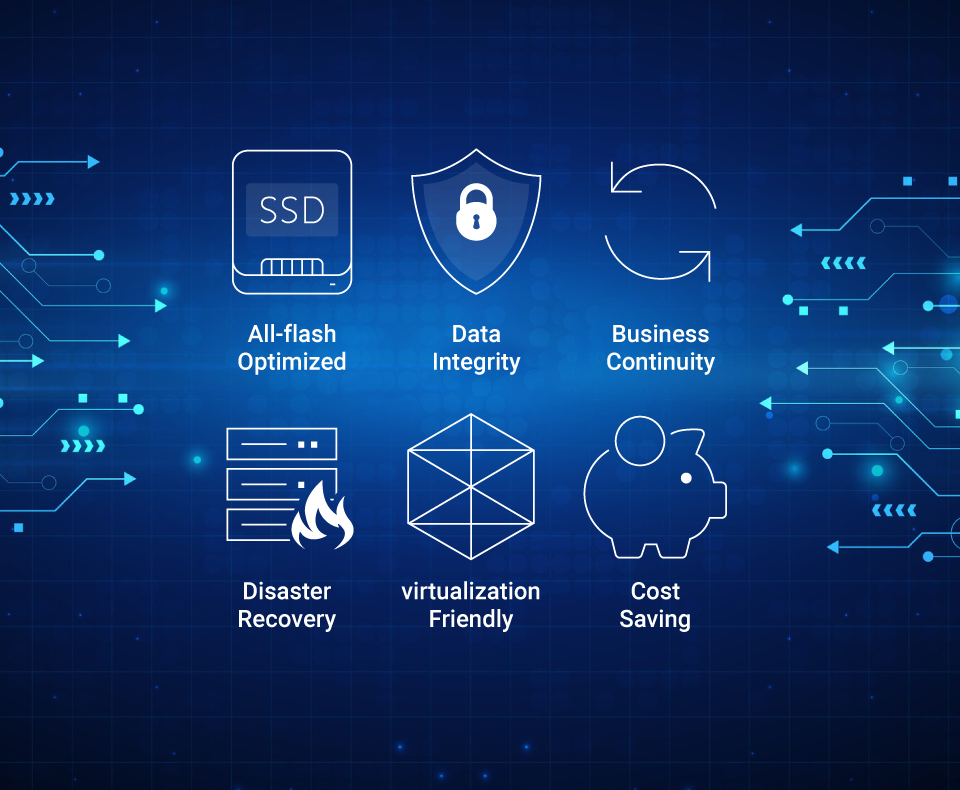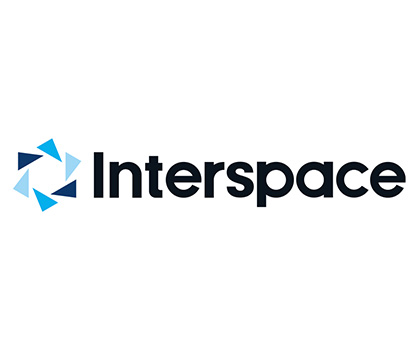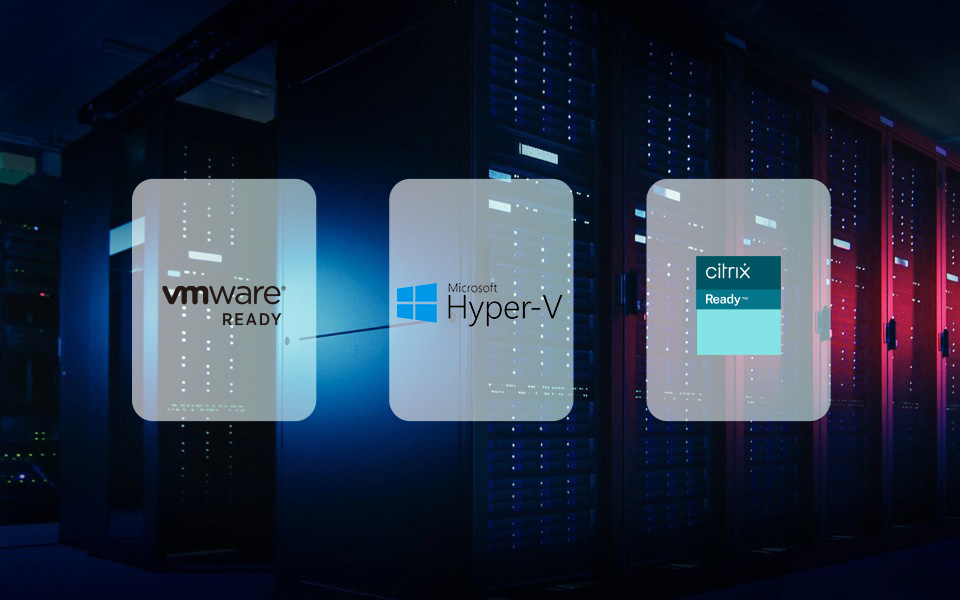Active-Active architecture: 2 units in a single chassis
Note: It is recommended to create multiple storage pools and distribute their ownership between both controllers to leverage the strengths of the ES1686dc R2 active-active controller architecture. This allows simultaneous output from both controllers for better load balancing.
Intel® Xeon® D processors bring high performance and efficiency
Powered by two Intel® Xeon® D processors, the ES1686dc R2 features a dual active-active controller architecture that provides failover/failback operations as the standby controller takes over if one controller breaks down.

-
SMB Sequential Throughput (10GbE x 8)
Write MB/sRead MB/s -
iSCSI Random 4K IOPS (10GbE x 8)
Write IOPSRead IOPS
| SMB Sequential Throughput (10GbE x 8) |
Write
MB/s
|
Read
MB/s
|
|---|---|---|
| iSCSI Random 4K IOPS (10GbE x 8) |
Write
IOPS
|
Read
IOPS
|
Tested in QNAP Labs. Figures may vary by environment. Learn more about test environment.
Multi-level cache technology
PCIe Gen 3 slots
The ES1686dc R2 provides two PCIe Gen 3 x8 slots per controller connected to the CPU, allowing you to add additional functionality to meet growing workload and business requirements.
Petabyte-scale, dual-controller SAS storage expansion
Gain petabyte-scale storage capacity using the QNAP’s expansion enclosure. Dual-channel (dual-path) connections allow service continuity even if one node fails.

NAS hardware you can rely on
QES: ZFS-based OS designed for HA systems
The ES1686dc R2 uses the QES operating system, which is based on the simple and efficient FreeBSD kernel and the ZFS file system that is suitable for high-end enterprise applications.
Learn More: QES 2.2

What’s the difference between QES and QuTS hero?
Self-healing ensures data integrity and reliability
Designed to ensure data integrity, the QES-based ES1686dc R2 uses end-to-end checksums to detect and correct silent data corruption caused by hardware defects, firmware bugs or metadata errors. If integrity violations are detected, QES automatically repairs the damage using data from the other mirror before the data is passed to applications.
Unleashed SSD potential – agile and cost-effective for the ultimate performance
QES 2.2 features QNAP’s exclusive Write Coalescing algorithm that further optimizes all-flash performance in ZFS, providing a highly cost-effective all-flash solution for enterprise data management and mission-critical services.
Deduplication and compression maximizes VDI storage performance
In VDI environments where there could be over 90% duplicate data from virtual desktop OS images and applications, the QES-powered ES1686dc R2 provides businesses with the most cost-effective remote virtual desktop platform and mission-critical information warehousing.

Deduplication helped us achieve our primary goal of increasing storage capacity more efficiently.
Real-time SnapSync ensures minimal RPO with real-time disaster recovery
Real-time SnapSync ensures that both the primary and secondary NAS maintain identical data. When data is written to the source, it is immediately written to the destination. If the primary NAS goes offline, IT staff can simply adjust the privilege settings of the secondary NAS to ensure continuous operations. SnapSync provides the strongest support for nonstop business operations and helps users to reduce the risk of data loss.
Learn More: SnapSync
Compatible with VMware, Microsoft and Citrix virtualization
The ES1686dc R2 supports VMware® vSphere®, Windows Server®, and Citrix XenServer® for flexible deployment and management in virtualization environments.
Learn More: Storage for Virtualization

Reliable, high-performance storage for virtualization
The ES1686dc R2 supports block-based iSCSI LUN as a reliable, high-performance, and affordable storage solution for mainstream virtualization environments. It supports VMware® VAAI and Microsoft® ODX to increase performance by offloading server loading for ESXi server and Hyper-V respectively.


Supports iSER for Improved VM Performance
The ES1686dc R2 supports iSER, combining iSCSI and RDMA (Remote Direct Memory Access), which can bypass general network drivers, the socket layer, and to directly enter memory buffers of the server and storage. Response time is also reduced to ensure service quality of the NAS.
Build an affordable Fibre Channel SAN environment
Common Fibre Channel Storage Area Networks (SAN) devices are often costly. By installing QNAP dual-port 16Gb/32Gb Fibre Channel expansion cards in the ES1686dc R2, you have more budget-friendly options to add a NAS to a SAN environment. You can set a Fibre Channel Target using the iSCSI & Fibre Channel app. Moreover, the LUN Masking and Port Binding features provide an additional layer of data security.
Learn More: QNAP NAS supports Fibre Channel SAN, QNAP Fibre Channel cards





















